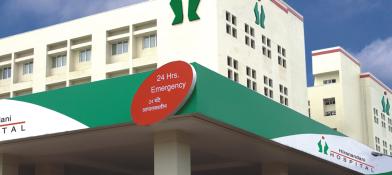Electrocardiogram (ECG or EKG)
Overview
An electrocardiogram (EKG) is the simplest and quickest way to check the heartbeats, evaluate the heart, and diagnose any heart condition.
Electric impulses control the contractions in the heart and keep the blood flowing normally.
The test records this electrical activity to assess the functioning of the heart through thin plastic patches called electrodes placed on the chest, arms, and legs. These electrodes are connected to a machine through wires that measure, interpret, and document the electrical activity. This is a non-invasive procedure; no electricity is sent inside the body. Changes in the electrocardiogram indicate a heart condition.
Indications For An Electrocardiogram
There may be several reasons a person may be asked to get an electrocardiogram.
They include:
- To determine the reason for chest pain
- To find the cause of recurrent fatigue, breathlessness, dizziness, or fainting.
- To check for irregular heartbeats called arrhythmias and skipping or pounding of the heart.
- To check if the pacemaker that is implanted in the heart is functioning correctly.
- To evaluate if the heart medicines prescribed are working well.
- To ascertain the cause of diminished ability for physical activity.
- To help assess heart health before any surgery and after treatment for conditions like heart attack, inflammation or infection in the heart valves, other conditions, or after heart surgery or cardiac catheterization.
- The doctor may also advise an electrocardiogram to screen a person for any heart diseases if there is a family history and for athletes to identify underlying cardiac problems that could pose a risk during intense physical exertion.
The Types of Electrocardiogram Devices
Apart from the regular electrocardiogram machine that records electrical impulses of the heart in a hospital or a clinic, there are other portable devices.
- Holter monitor: This small, portable ECG machine records heart activity for a few days. The portable device can be used at home while doing several activities.
- Event monitor: As the name suggests, this device records the impulses at intervals for a few minutes. It is worn for about a month and is activated through a button when a person experiences symptoms. Certain devices start recording when irregular heartbeats occur.
- Smartwatches also have electrocardiograms and can be used to record abnormal heart symptoms or activity.
- Implantable Loop Recorder (ILR) that monitors the impulses for up to three years.
The alternatives for an electrocardiogram are
- Exercise Stress Test, which checks heart activity during exercise.
- An echocardiogram (Echo) involves the use sound waves to create images of the heart.
- Cardiac MRI that facilitates detailed images of the heart.
- CT scan to visualize the heart and surrounding vessels.
The Procedure
Before The electrocardiogram
- The doctor or the technician explains what to expect during and after the procedure to the person and enquires whether the person has a pacemaker or is taking any medicines or supplements.
- It is important to note that fasting is not required before the procedure.
During The electrocardiogram
- The test is conducted in a hospital or a clinic.
- The person is asked to remove any metal pieces from the body, like jewelry, watches, chains, etc, as they may interfere with the test.
- The person is asked to remove clothes from the upper portion of the body and is provided with a gown.
- The person is asked to lie flat on the bed or table and be still without talking.
- Shaving may be recommended if the chest or limbs are hairy, so electrodes stick well to the skin.
- Electrodes are stuck to the chest, arms, and legs, and the machine is started. The procedure is completed in a short time.
After The Electrocardiogram
- The person can go home and resume normal routine activities as no particular care is required after the procedure unless it is instructed by the doctor.
- The doctor analyzes the electrocardiogram readings to identify any irregularities.
- The findings are documented, and further diagnostic tests or treatment modules may be prescribed based on the results.
Benefits Of An Electrocardiogram
- The first significant benefit of an electrocardiogram is the early detection it offers. It can quickly detect mild irregularities in the heartbeats for timely diagnosis and preventive care or treatment.
- The procedure is non-invasive and hassle-free, with minimal risks to the person undergoing the test.
- It is fast, simple, requires no specific pre-preparation, and is painless with no electric current entering the body.
- The test provides valuable insights into many aspects of the heart, such as its functioning, heartbeat rhythms, and ischemic changes.
- The procedure is inexpensive and easily accessible to people of all ages and from all socio-economic backgrounds.
Risks And Complications
An electrocardiogram is a painless, hassle-free procedure with minimal to no risks at all. People who take the test feel no discomfort except for some who might feel uncomfortable when the sticky electrodes are removed. However, if the electrodes are kept for a long time, they may cause skin irritation or electrical burns, especially if someone has sensitive skin. Since electrocardiograms capture a snapshot of the heart's activity during the recording period, they may miss transient abnormalities or arrhythmias.
Some factors may influence the test results. They include
- Obesity.
- Size of the chest and where the heart is located inside the chest.
- Any movement while the test is conducted.
- Exercise or smoking just before before the test.
- Certain medicines.
- Electrolyte imbalances in the blood.
- Incorrect electrode placement.
- Electrical interferences.
Conclusion
An electrocardiogram is a fast, simple, pain-free test to check your heart. Still, the early and timely information and insights it provides are valuable for evaluating the overall functioning of the heart and determining the best treatment plan. Following the doctor's advice at all stages is essential, as well as ensuring that the heart is protected for a healthy and happy life.
































